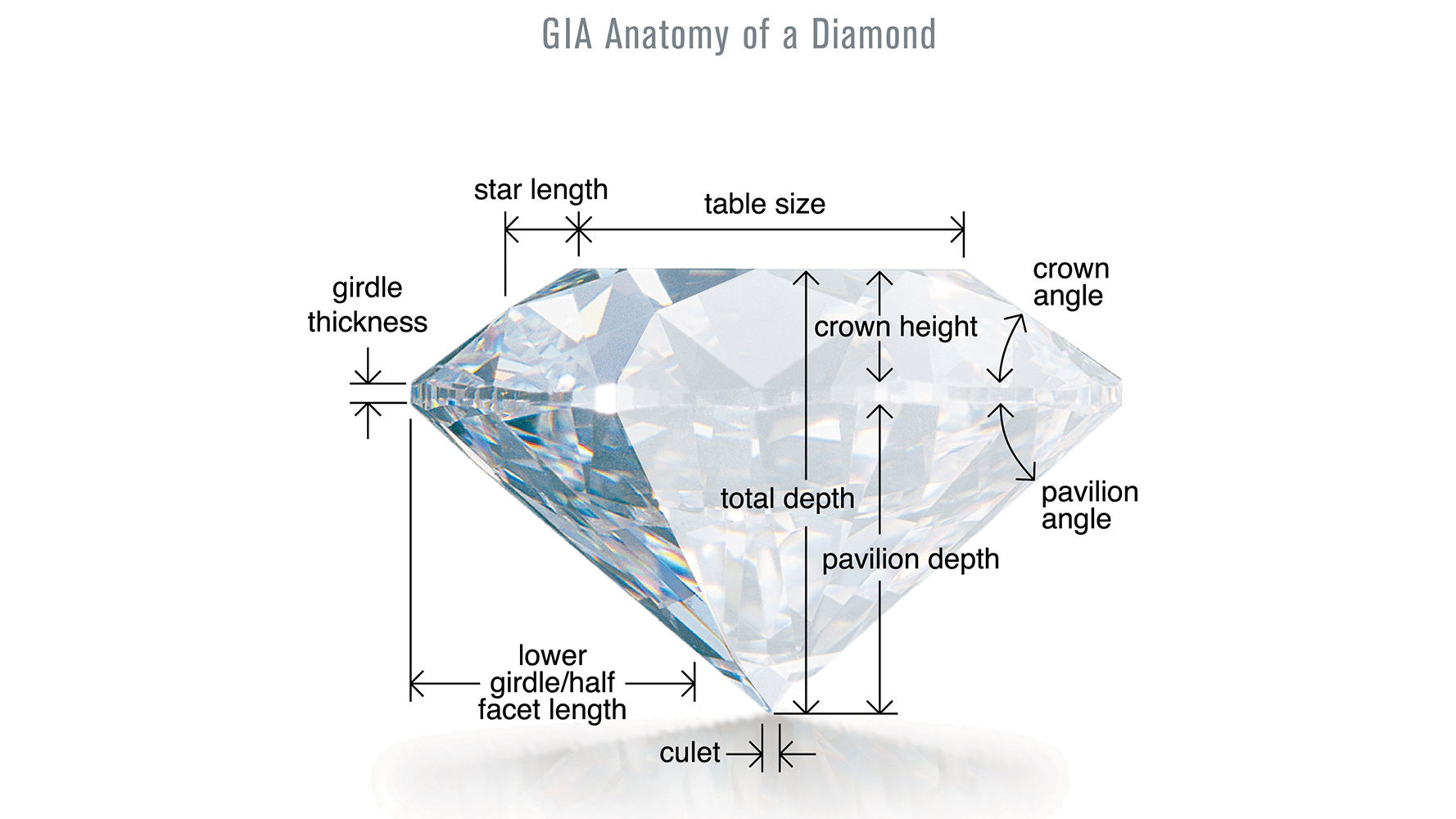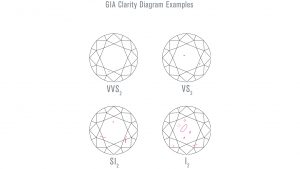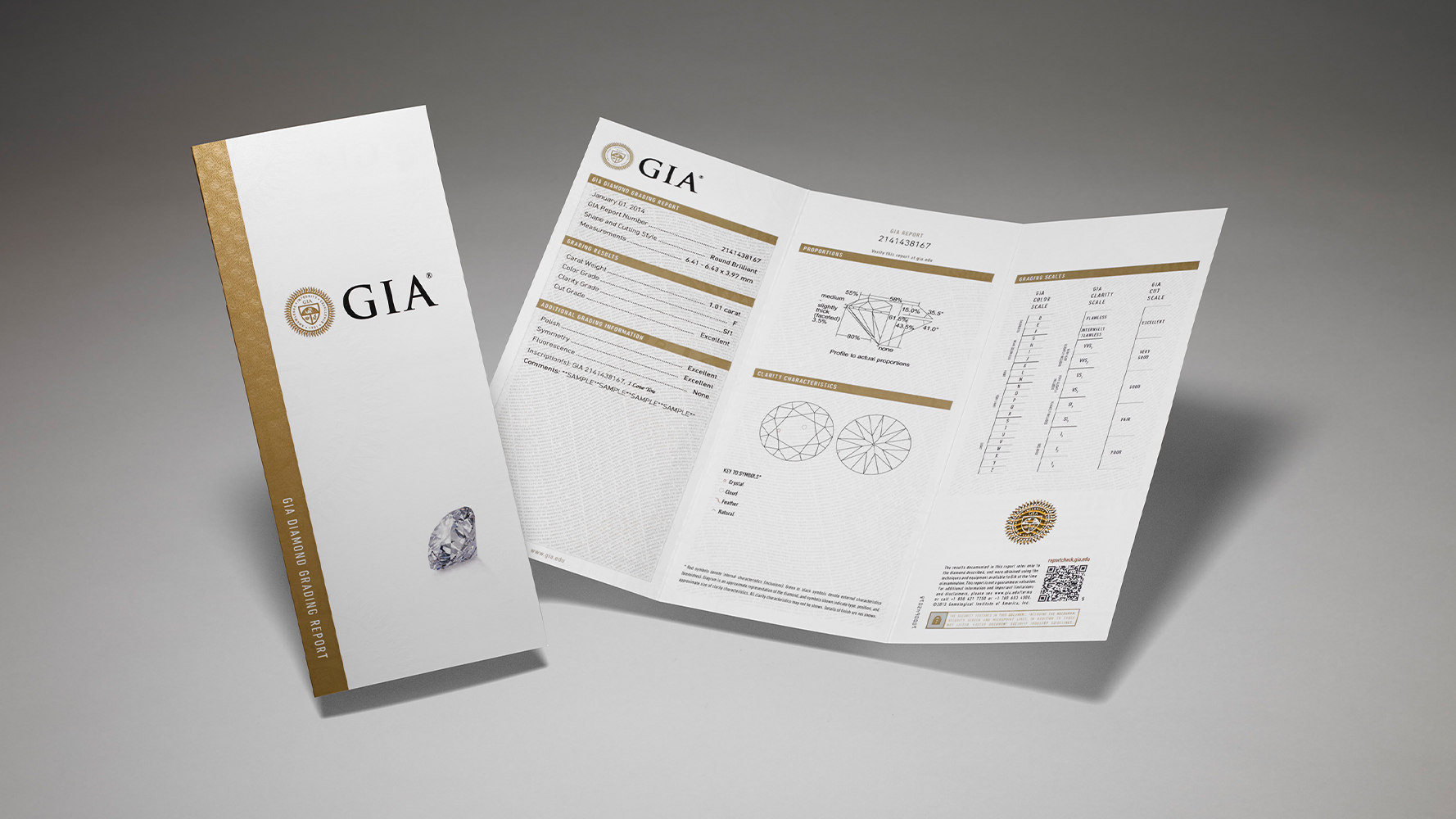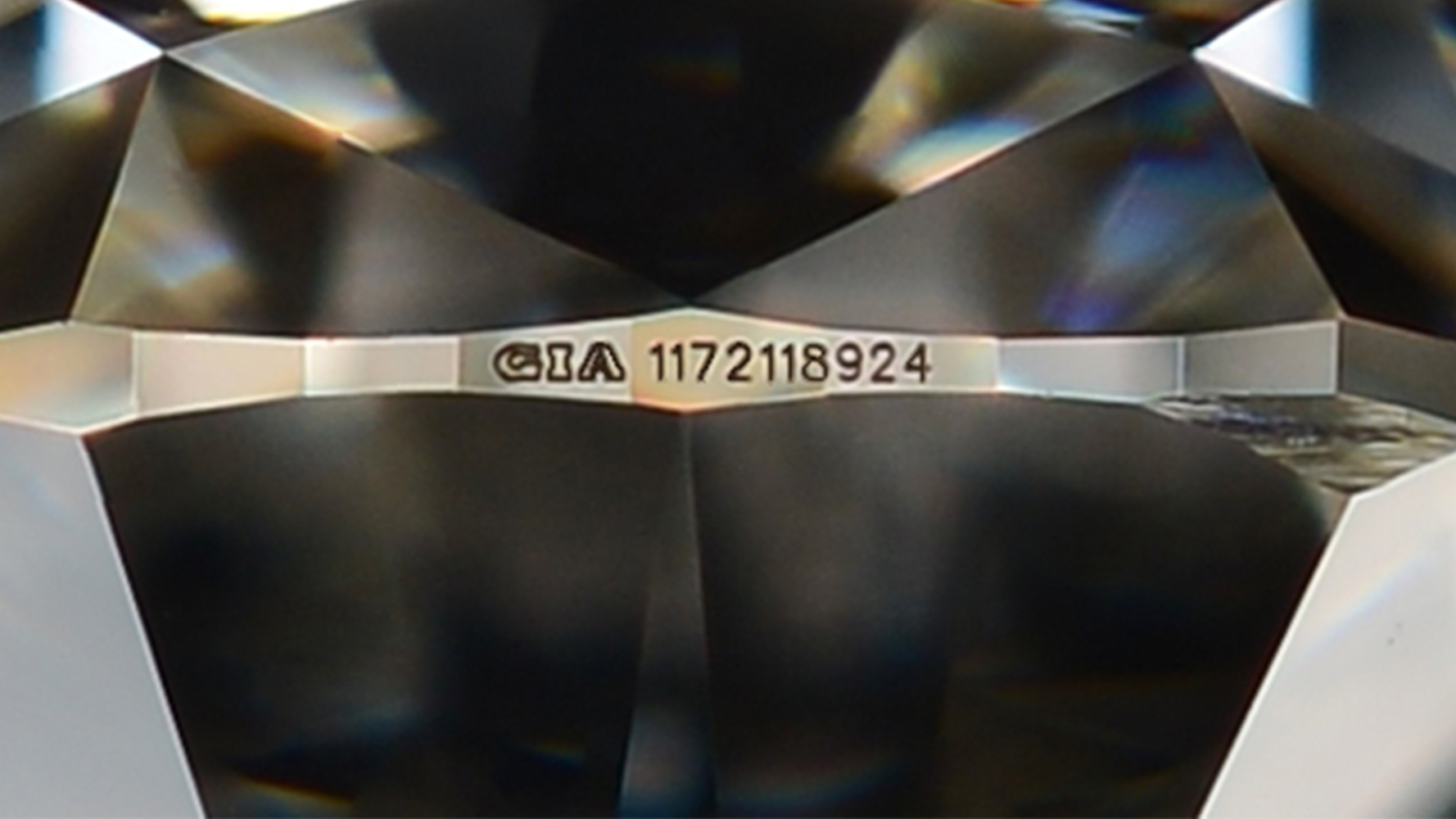Every diamond has a love story, and part of that story can be told by the 4Cs of diamond quality. Before you buy a diamond, learn how to understand your diamond’s 4Cs and which of the quality factors you value most. The guidance of a GIA-trained retailer can also help you with the process.
In this article, we will cover:
- What are the 4Cs of diamond quality?
- How do you buy a diamond in-store?
- How do you buy a diamond online?
- Why do you need a GIA Diamond Grading Report?
- How do you protect your purchase?
What are the 4Cs of diamond quality?
The GIA 4Cs of diamond quality helps you understand a diamond’s characteristics as well as its value and price.
- Cut is perhaps the most crucial of the 4Cs. Cut does not refer to a diamond’s shape, but rather to the quality of workmanship (proportion and arrangement of facets) for round brilliant diamonds.* The quality of a diamond’s cut determines the amount of brilliance, sparkle and fire that a diamond shows. Grades range from ‘Excellent’ to ‘Poor.’
*Note that fancy cut diamonds such as pear or heart-shaped diamonds do not have GIA cut grades, because there are wider parameters for their proportions and facet arrangements.
Tip: Most diamonds on the market have ‘Excellent’ to ‘Very Good’ cut. Diamonds with a ‘Poor’ cut grade will generally appear lifeless and dull.
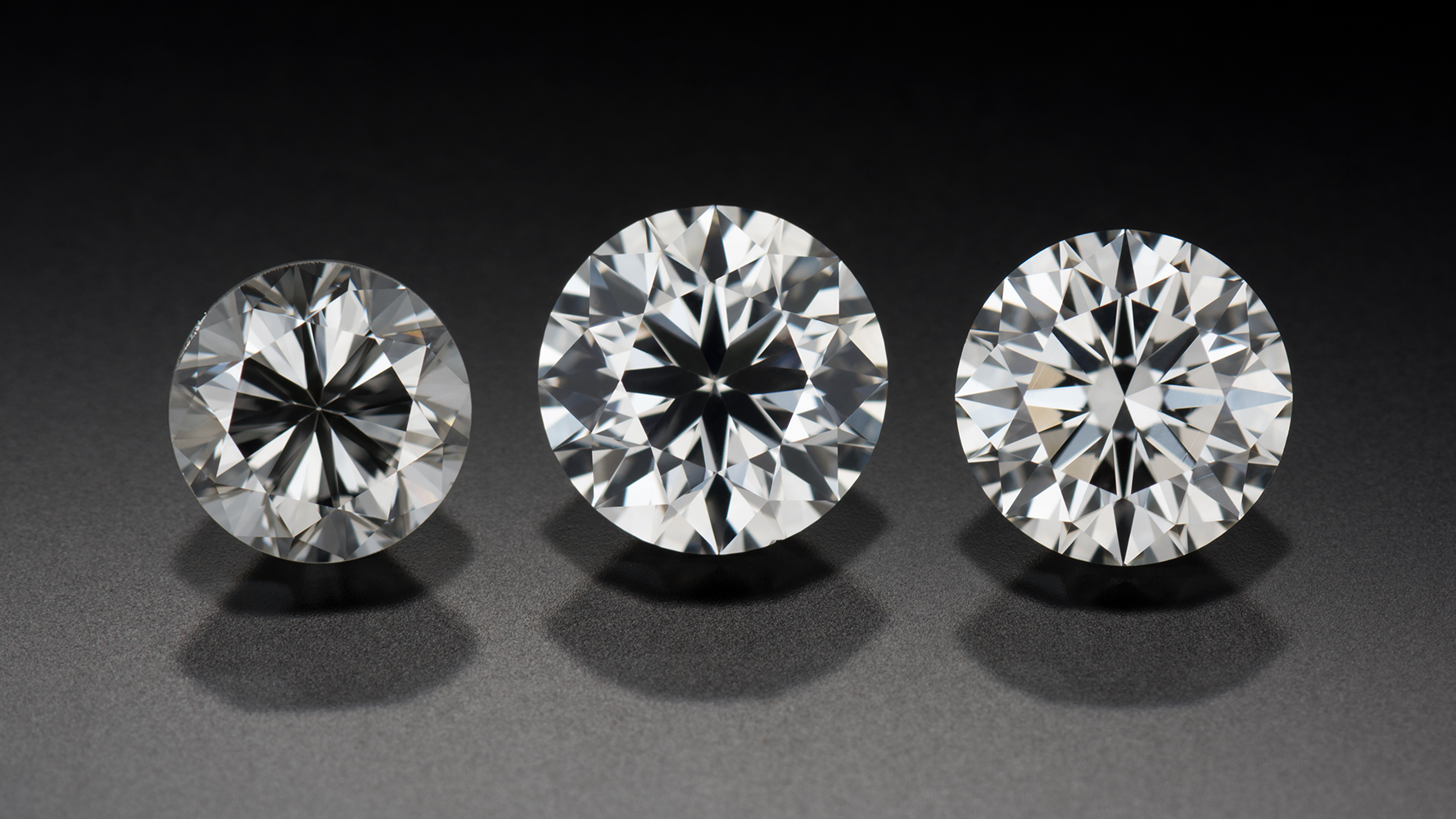
The diamonds in this image show Poor, Good and Excellent cut grade from left to right. Photo:
Kevin Schumacher/ GIA
- Color measures a diamond’s absence of color. This is because most “colorless” or “white” diamonds actually contain trace amounts of yellow, brown or gray color. The less color in a diamond, the more desirable and valuable it is. There are 23 color grades on the D-to-Z scale, with D meaning that a diamond has no detectable color at all and Z meaning that a diamond has “light” color. Any diamond beyond the Z color grade is a fancy color diamond and is evaluated on a different color scale.
- Color grade impacts the price of a stone, but differences of one to three color grades are not easily detectable to untrained eyes. Diamonds graders evaluate diamonds face-down in special environments to see subtle color differences.
Tip: D, E and F grade diamonds tend to be extremely rare and valuable. G and H diamonds are typically considered good value. Color becomes more visible in the I grade and below.
- Clarity measures the amount, size and placement of internal ‘inclusions’ and external ‘blemishes.’ Inclusions include small crystals or fissures within the diamond. Blemishes include chips. Grades range from ‘Flawless,’ which means a diamond has no visible imperfections at 10x magnification, to ‘Included,’ which means a diamond contains a significant number of imperfections. Diamonds with grades down to VS2 (Very Slightly Included) or SI1 (Slightly Included) do not typically have eye-visible inclusions. These diamonds can be good value. Diamonds I1 (Included) or lower have inclusions that are easily seen and can appear less attractive; some of these inclusions might also impact the diamond’s durability.
Tip: Brilliant-cut diamonds show clarity characteristics less than step cut diamonds do, because the pattern of the facet arrangement obscures inclusions better. If you want to buy a step cut diamond (such as an emerald cut), you may have to go higher in color and clarity than with a brilliant-cut diamond.
- Carat refers to a diamond’s weight. Generally speaking, the higher the carat weight, the larger the diamond appears and the more valuable the stone. How large a diamond appears also depends on its proportions. For example, a one-carat diamond that is wider but has shallow proportions will appear larger than a one-carat diamond with excellent proportions.
Tip: Diamond prices go up exponentially as carat weight increases. They increase more at certain “magic sizes,” such as 0.5, 1.0, 1.5, 2.0 carats etc. Buying right below a “magic size,” such as purchasing a 0.95 carat diamond instead of a 1.0 carat diamond, can save money without making much of a difference in visual impact.
Another factor to consider when buying a diamond is diamond fluorescence. Learn more here.
How do you buy a diamond in-store?
The first step of buying a diamond in-store is finding a reputable jeweler. Your jeweler should be armed with expert training, be open to questions, and be able to explain how to buy a diamond in clear, simple language. A jeweler’s professional training can help you evaluate how knowledgeable he or she is. Preferably, their training comes from a highly recognized and internationally accredited program, such as the GIA Graduate Gemologist (GG) or Applied Jewelry Professional (AJP) diploma programs.
As your personal diamond-buying guide, an educated jeweler will not only explain the 4Cs of Diamond Quality, but will also be able to demonstrate the differences between apparently similar stones. They will encourage you to compare a number of diamonds that fall within your budget. The GIA Retailer Lookup is a handy tool that allows you to locate local retailers that have GIA-trained staff or carry GIA-graded diamonds. Simply enter in your address or zip code to find these retailers in your area.
Once your jeweler shows you diamonds within your specifications and price range, compare the diamonds in different lighting environments at the jewelry store to see if you like their face-up pattern, fire and sparkle. Cooler lighting tends to reveal a diamond’s brightness and face-up pattern more, while warmer lighting reveals a diamond’s fire more.
How do you buy a diamond online?
Online shopping allows buyers to browse vast quantities of diamonds from the convenience of home. Many websites let shoppers search according to 4Cs parameters. This way, shoppers can compare the prices of diamonds that have similar characteristics.
Grading reports are crucial when shopping in this way, because without seeing the diamonds in person, the diamonds’ 4Cs quality factors are what distinguishes one diamond from another. Make sure that you purchase a diamond with a report from a reputable laboratory such as GIA. This way, you know exactly what you are paying for.
Note that two diamonds with the same 4Cs grades will not appear exactly the same. Their proportions and facet placement will still vary slightly so that their face-up patterns are different. This is why many larger online retailers have videos or 360-degree views of their diamonds. These videos will give you a general idea of what a diamond looks like, but a diamond’s appearance may still vary according to different lighting situations.
Make sure you know the company’s return policy before you purchase. If the cost isn’t too prohibitive, you can also buy two to three diamonds to compare and keep the one you like most. Be sure to see the diamonds in different lighting situations to see which looks best to you overall. Online browsing can also be a great way for you to research diamond prices before going to a brick-and-mortar store to buy a diamond.
Why do you need a GIA Diamond Grading Report?
A diamond grading report from an unbiased, scientific laboratory such as GIA is more than a document containing important information; it’s proof of what you are buying. Purchasing a diamond with a GIA report ensures that you know the quality of your diamond and exactly what you are paying for. At GIA, we know diamonds. We created the 4Cs of diamond quality and the GIA International Diamond Grading System™ used worldwide for grading diamonds. Top museums and auction houses trust us to evaluate their finest treasures, and our reports are recognized internationally. We issue a variety of diamond reports, ranging from the GIA Diamond Dossier to the GIA Diamond Origin Report. Learn what each report can tell you about your diamond.
How do you protect your purchase?
Once you’ve purchased the right diamond, have it appraised and insured. Appraisers and insurers rely on diamond grading reports to determine the value of gems. If your diamond doesn’t already have an inscription, consider having it laser-inscribed with its GIA report number to provide verification if it is ever lost or stolen.
WHAT IS A GIA GRADUATE GEMOLOGIST (GG)?
The prestigious GIA Graduate Gemologist diploma program teaches jewelers the science and technical knowledge to identify and evaluate diamonds and colored stones. The GIA GG designation at the end of an individual’s name is recognized around the world as the mark of a professional in the jewelry industry.
WHAT IS AN APPLIED JEWELRY PROFESSIONAL (AJP)?
The GIA Applied Jewelry Professional credential is a professional development program designed specifically for sales associates. It provides them with the crucial product knowledge needed to explain how to buy diamonds to their customers.


